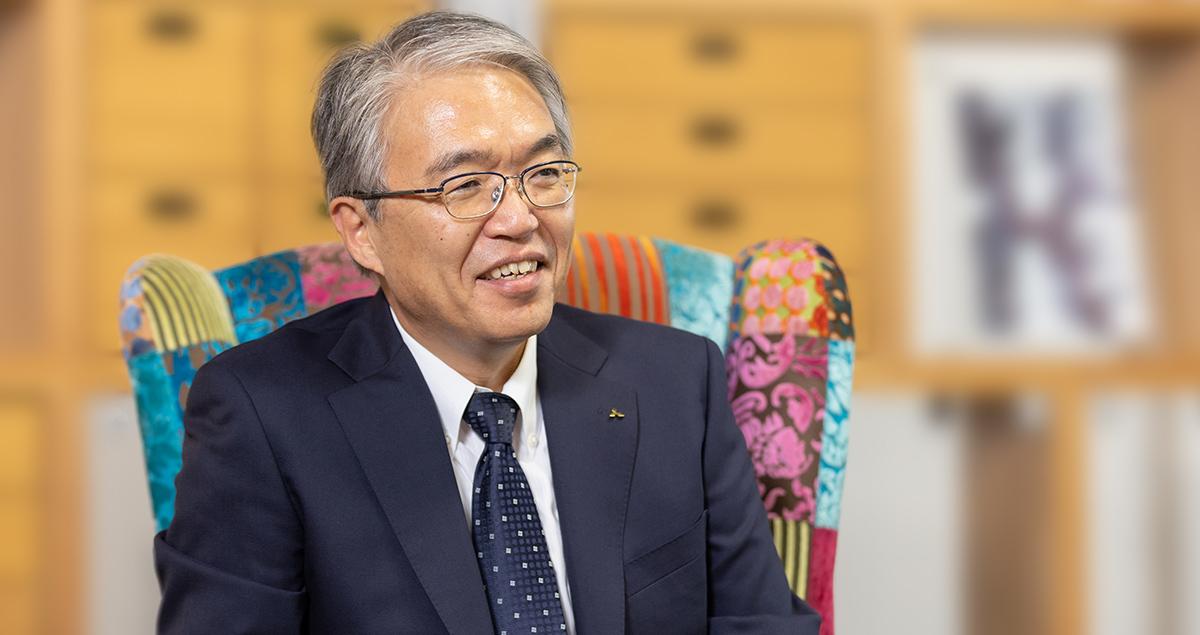GX Solutions: How MHI is helping customers tackle decarbonization

This article was previously published in our newsletter, if you're not already a subscriber, sign up here.
The decision by Mitsubishi Heavy Industries (MHI) Group to create a dedicated GX (Green Transformation) Solutions division is both a clear signal of our commitment to supporting the Energy Transition, and the next natural step in the evolution of our company.
MHI has been working on decarbonization for decades and we have a range of relevant technologies and deeply experienced staff spread all around our group. What we did not have until this April is a single point of contact for customers.
The new GX Solutions bundles our expertise across CO₂ capture, hydrogen and ammonia – and their developing value chains – and enables potential customers to obtain research, advice and, potentially, pricing on a decarbonization solution tailored to their specific needs.
Internally, GX Solutions unites 2,600 employees (out of roughly 80,000), drawn from various parts of MHI, to create multi-disciplinary teams that understand our low-carbon products and services. They have a wealth of experience in decarbonization, thereby strengthening collaboration within the group.
They are also ideally placed to forge new connections to external partners, from customers to engineering peers to academic institutions: our collaborations with ExxonMobil, Saipem, SBM Offshore and Chiyoda Corporation across the CO₂ value chain are examples of this. Such collaborations will help us to reach GX Solution’s goal of generating ¥300 billion ($2 billion) of additional revenue by 2030 in our decarbonization business.
First: Capture your carbon emissions
CO₂ capture or Carbon Capture Utilization & Storage (CCUS) is where we expect to be most active in the near term. While the technology has its challenges and its critics, it is undeniable that achieving net zero by 2050 will require large-scale application of CCUS. Our estimates, based on calculations from the International Energy Agency, McKinsey and others, is that even assuming rapid progress on decarbonization, the world will need to capture around 7.6 Gigatons of remaining CO₂ annually in 2050 even after carbon emissions are reduced by other means.
Industrial manufacturers, energy companies and utilities, under pressure from stakeholders to reduce their Scope 1 & 2 emissions, are starting to see CCUS as a realistic option – especially as they realize that neither renewables nor green hydrogen will provide a complete or near-term solution.
As a result, the number of FS (Feasibility Study) and FEED (Front End Engineering & Design) studies we are handling has doubled in the past few years. With some customers, like steelmaker ArcelorMittal and cement group Heidelberg Materials, we are already working to trial CO₂ capture technology at many of their facilities around the world.
Scaling this business to the required level will need government incentives for a number of years, as well as more realistic carbon pricing. Only that will give the private sector the confidence to go ahead with FIDs (Final Investment Decisions) for the many CO₂ capture projects that are currently at the planning stage.

When they do, however, MHI will be well placed. We are the leader in post-combustion CO₂ capture technology with the top market share and a proven track record. We plan to accelerate deployments by licensing our technology, which is the essence of our agreement with Chiyoda; and by helping to build a complete CCS value chain backed by the combination of MHI’s CO₂ capture technology and ExxonMobil’s transportation and storage capabilities.
Second: Build a clean fuel value chain
Developing value chains is at the heart of our expansion plans for low-carbon hydrogen and ammonia. These are very much the clean fuels of the future and will ultimately play a critical role in decarbonizing hard-to-abate industrial sectors such as steel and cement; as well as enabling long-distance transport through Sustainable Aviation Fuel (SAF), and e-methane and e-diesel for ships and trucks.
However, green hydrogen is very much a long-term solution and some of the enthusiasm that surrounded it just a couple of years ago has evaporated. If that leads to more realistic assumptions, this is a positive development in my view. It is simply a fact that the price of clean hydrogen has actually risen due to inflation for materials and labor and rising demand for renewable electricity from new sources like data centers.

This has led to something of a logjam in scaling hydrogen production. MHI’s senior management, which never subscribed to the hydrogen hype, would now counsel people not to become too gloomy. Global renewables output continues to increase rapidly, electrolyzer capacity is ramping up and green hydrogen projects are still being announced regularly in areas like the Middle East and Latin America.
What is required to break the jam is government support and I would point to H2Global in Germany as an example of a public sector offtaker that can underwrite projects. Using CfDs (Contracts for Difference) is a way of bringing the financial market’s firepower to bear and is being trialed in Japan and South Korea. With more financing in place, I expect meaningful scaling of production during the 2030s – still in time for green hydrogen to make a significant contribution to reaching net zero.
Third: Solve for the future
Meanwhile, the GX Solutions business and all of MHI will continue to refine existing products and develop new ones as we seek to reach our own “MISSION NET ZERO” goal in 2040 and help our customers and the world achieve decarbonization a decade later.
My career has taught me that while applying technology and engineering skills to a challenge rarely gives you the complete answer, it is always at least a part of the solution. We should not expect too much from technology; but without technology, humanity will not be able to make significant progress.
That is why we at MHI will continue to apply our technology and our experience to solving some of society’s biggest challenges – with the required realism but also with a sense of optimism.
![]()





